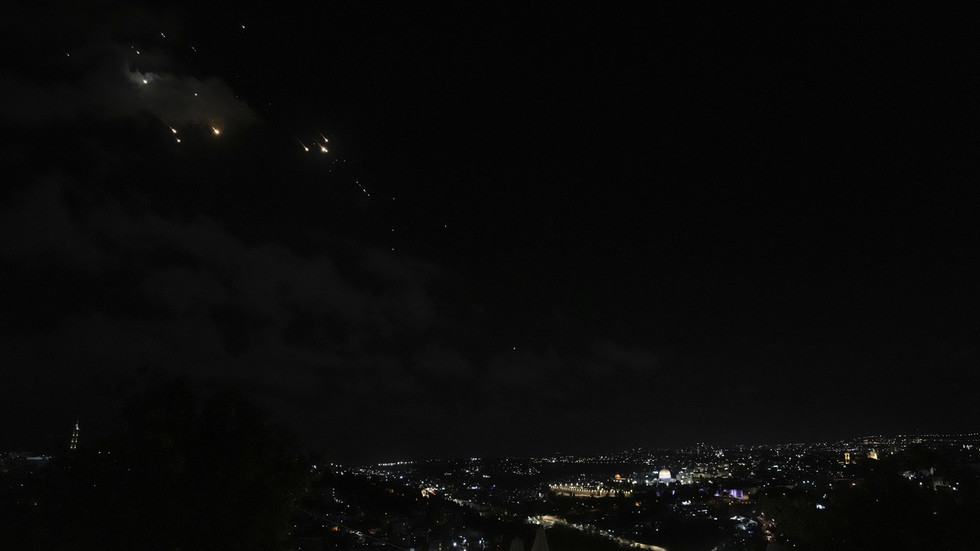Recent tensions between Iran and Israel have escalated significantly, particularly following a series of military actions and retaliatory threats. The Islamic Revolutionary Guard Corps (IRGC) announced that Iran has devised at least ten potential responses to any Israeli strike. This declaration came after Iran executed a missile attack against Israeli military bases, which it termed a proportional reaction to previous Israeli operations that targeted leaders from Hamas and Hezbollah. In response, Israeli officials have promised to deliver retaliation that is both serious and substantial. Notably, Tehran’s military strategists suggest that Iran’s response may not mirror the level of aggression shown by Israel, but could instead focus on different targets that amplify the impact of their retaliation.
The Iranian military has warned that any nation assisting Israel, particularly the United States, risks entering into conflict with Tehran. An IRGC source claimed that such support would exceed Iran’s “red lines,” resulting in severe consequences. This warning is particularly pointed as reports emerge of U.S.-Israel collaboration regarding potential military actions against Iran’s nuclear capabilities. Recently, there were indications that the U.S. government proposed a compensation package to Israel to dissuade them from attacking Iranian nuclear or oil installations, yet Israel’s Defense Minister maintained that all options remain on the table, creating a complex interplay of security concerns among all involved parties.
The backdrop to these tensions includes the anniversary of a significant Hamas offensive that occurred on October 7, resulting in substantial Israeli casualties and the declaration of war by the Israeli government. In this prolonged conflict, Israel’s retaliatory actions have led to catastrophic losses in Gaza, with local sources estimating over 41,000 deaths. This context is further complicated by the increasing frequency of Israeli strikes on Iranian-affiliated leaders, such as the recent airstrike that reportedly killed Hezbollah leader Hassan Nasrallah. Although Israel has not officially acknowledged its involvement in the assassination of Hamas political chief Ismail Haniyeh, the targeted actions underscore the precariousness of the regional security landscape.
The IRGC’s detailed preparatory strategies reflect an understanding of the geopolitical nuances at play, suggesting that Iran could leverage its larger territory and strategic assets to create significant disruptions for Israel, which is perceived as having more sensitive and vulnerable infrastructure. The mention of varied, potentially harsher responses signifies Tehran’s intent to deter further Israeli aggression through calculated military initiatives that could escalate tensions further. This notion posits a broader strategy beyond simple tit-for-tat retaliation, potentially shifting focus towards crippling strikes that might involve multiple spheres of conflict, thereby heightening regional instability.
While the rhetoric from both sides escalates, the dire humanitarian situation in Gaza stands as a critical consequence of the ongoing conflict. The high fatality rates and destruction of infrastructure underscore the urgent need for intervention and mediation to prevent further escalation. Moreover, the continued cycle of violence and retribution between Israel and Iranian-associated groups emphasizes the intricate interdependencies among regional actors that complicate relief efforts and negotiation processes. The absence of dialogue amidst military escalation raises alarms regarding potential overreach and miscalculations that could spiral into a broader conflict involving other state and non-state actors in the region.
As this situation continues to unfold, the potential for increased international involvement remains substantial. With the U.S. and other allies weighing their commitments and responses, the balance of power in the Middle East remains tenuous. The global community is urged to pay close attention to the emerging dynamics and the potential for diplomatic solutions amidst escalating military actions. The urgency of intervention speaks to a need for negotiating mechanisms that prioritize de-escalation, humanitarian aid, and long-term stability—imperatives that seem increasingly elusive in light of the current trajectory of hostilities.

